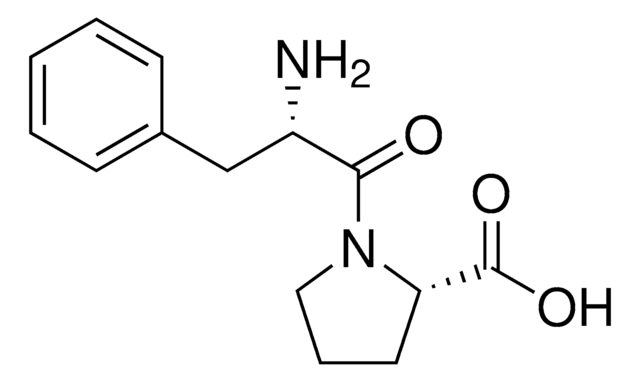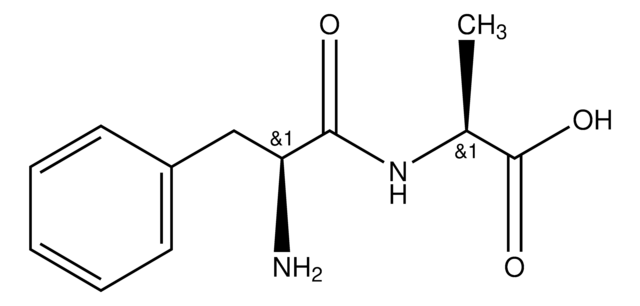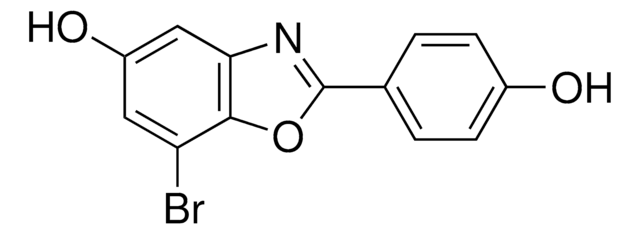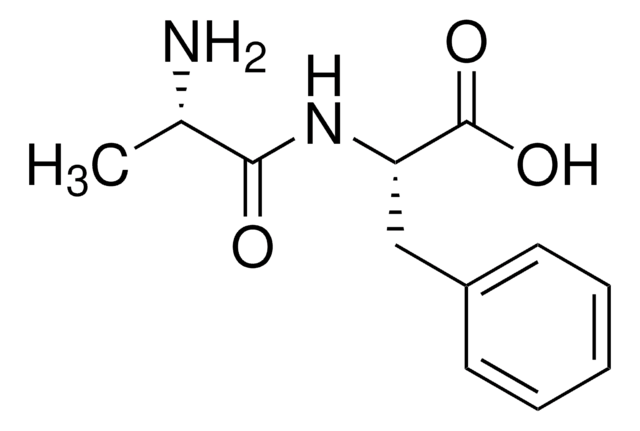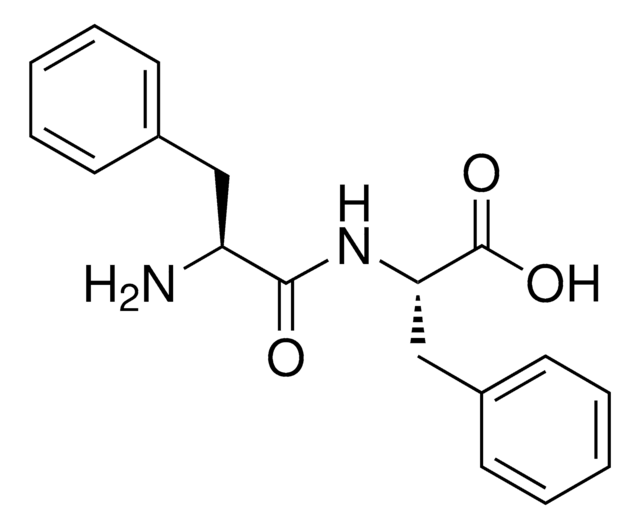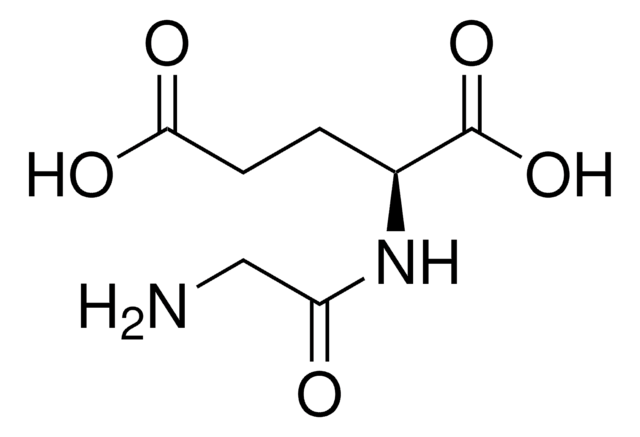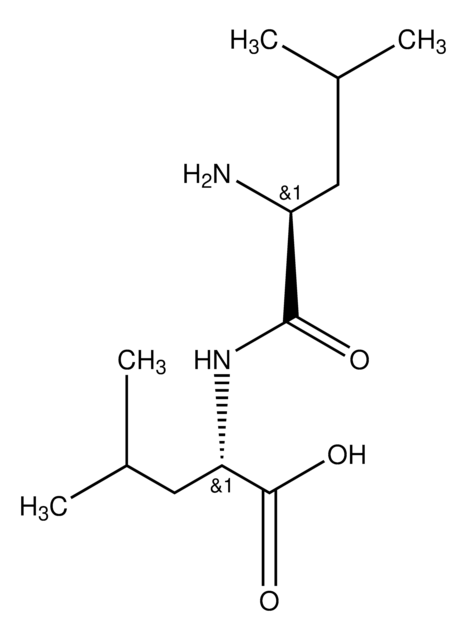Wszystkie zdjęcia(1)
Kluczowe dokumenty
L9625
Leu-Gly
≥98% (TLC)
Synonim(y):
Leucyloglicyna
Zaloguj sięWyświetlanie cen organizacyjnych i kontraktowych
About This Item
Wzór empiryczny (zapis Hilla):
C8H16N2O3
Numer CAS:
Masa cząsteczkowa:
188.22
Numer WE:
Numer MDL:
Kod UNSPSC:
12352209
Identyfikator substancji w PubChem:
NACRES:
NA.26
Polecane produkty
Nazwa produktu
Leu-Gly,
Próba
≥98% (TLC)
Formularz
powder
kolor
white
temp. przechowywania
−20°C
ciąg SMILES
CC(C)C[C@H](N)C(=O)NCC(O)=O
InChI
1S/C8H16N2O3/c1-5(2)3-6(9)8(13)10-4-7(11)12/h5-6H,3-4,9H2,1-2H3,(H,10,13)(H,11,12)/t6-/m0/s1
Klucz InChI
LESXFEZIFXFIQR-LURJTMIESA-N
Działania biochem./fizjol.
Leucyloglicyna (Leu-Gly) jest stosowana do badania kinetyki i specjacji kompleksu cis, cis-1,3,5-triaminocykloheksanu promowanego hydrolizą dipeptydów miedzi(II).
Ta strona może zawierać tekst przetłumaczony maszynowo.
Kod klasy składowania
11 - Combustible Solids
Klasa zagrożenia wodnego (WGK)
WGK 3
Temperatura zapłonu (°F)
Not applicable
Temperatura zapłonu (°C)
Not applicable
Wybierz jedną z najnowszych wersji:
Masz już ten produkt?
Dokumenty związane z niedawno zakupionymi produktami zostały zamieszczone w Bibliotece dokumentów.
Cleavage of L-leucine-containing dipeptides by Clostridium butyricum.
Khelifa N, Brik M, Tessedre AC, et al.
Bioorganic & Medicinal Chemistry, 9, 109-112 (1999)
Irene L Gutiérrez et al.
Molecular neurobiology, 55(10), 7872-7885 (2018-02-27)
The decline in brain noradrenaline levels is associated with the progression of certain neurodegenerative diseases. This seems to be due, at least in part, to the ability of noradrenaline to limit glial activation and to reduce the damage associated with
Yuki Fujii et al.
Journal of biological inorganic chemistry : JBIC : a publication of the Society of Biological Inorganic Chemistry, 7(7-8), 843-851 (2002-08-31)
The hydrolysis of glycylglycine (GylGly), glycyl-L-leucine (GlyLeu), L-leucylglycine (LeuGly) and glycyl-DL-serine (GlySer) promoted by a copper(II)- cis, cis-1,3,5-triaminocyclohexane complex [Cu(II)TACH] was investigated at 70 degrees C and pH 7-10, using HPLC. The observed pseudo-first-order rate constants (k(obs)) and rate enhancing
Yu-Hsin Lin et al.
Nutrients, 10(10) (2018-10-03)
Hot water was used to obtain Chlorella sorokiniana hot water extract (HWE). Subsequently, this byproduct was freeze-dried, hydrolysed at 50 °C using Protease N to obtain C. sorokiniana protein hydrolysates (PN-1), and then digested with a gastrointestinal enzyme (PN-1G). The
Yu-Hsin Lin et al.
Nutrients, 11(6) (2019-06-19)
This research focuses on cobia skin hydrolysates and their antihypertensive effects via the inhibitory activities of angiotensin I-converting enzyme (ACE). Marine fish Cobia (Rachycentron canadum) skin was hydrolysed for 5 h using Protamex and Protease N to obtain the cobia
Nasz zespół naukowców ma doświadczenie we wszystkich obszarach badań, w tym w naukach przyrodniczych, materiałoznawstwie, syntezie chemicznej, chromatografii, analityce i wielu innych dziedzinach.
Skontaktuj się z zespołem ds. pomocy technicznej